On October 24, 2012, I took Silk Air MI636 to Siem Reap for a week. Silk Air currently flies to Siem Reap everyday of the week, but on some days there is one stop in Da Nang, Vietnam. This was one of those days, but still it was a pleasant flight and I got to see a bit more from the air.
Landing at the new Siem Reap airport was at about 5:30 pm. We were at the hotel just after 6 pm as the airport is just a few kilometers from town and customs clearance was efficient. Cambodia is one hour earlier than Singapore so it was already dark when we checked in. For the days we stayed in Siem Reap, the Asia Happy Villa hotel would be our home.
I had last been to Cambodia in late November 2000. At that time the Hollywood movie, Tomb Raider with Angelina Jolie was being made. There was still a Hollywood set at Angkor Wat. Talk in the hotels was of the cast. It was an eventful time, there had been an armed clash in Phnom Penh on the day we arrived. It was just 2 years since Pol Pot had died. We visited the infamous S-21 Tuol Sleng. The roads were terrible, my nickname for Cambodia was “Land of Bumpy Roads.” And the tourist flood had just begun.
Now 12 years later I could not recognize Siem Reap. The tourist dollar has brought tremendous development to the city together with many NGO’s and foreign aid. The bumpy roads are gone and replaced by good paved roads. Restoration works on several temple ruins has progressed and is still being carried on. More places to go have opened up both because the road network has vastly improved but also because more areas have been completely demined. Twelve years ago I visited to see the temples, this visit was for the birds.
The next morning we headed to Tmatboey, a village in the northern plains close to the Thai border. Located in a large wildlife sanctuary the habitat is deciduous dipterocarp forest. This type of forest used to exist at this latitude from India through Thailand, but due to human activities has been cleared in those countries making what remains here even more important. It’s a rather open woodland and used to be kept open by herds of elephants and gaur. It is one of the last remaining sanctuaries for the critically endangered Giant Ibis and White-shouldered Ibis. We stayed for two nights in accommodations built by the Wildlife Conversation Society and now operated by the villagers with support from Sam Veasna Center. Part of your ecotourism dollar goes directly to the villagers which encourages them to support conservation, instead of poaching ibis eggs!
As it was just after the rainy season and you need 4WD to get in as the accommodations are off the main road. The rooms below are quite nice and each bed has mosquito netting, although we encountered few mossies. Each cabin has two rooms and there are four cabins, so with double occupancy they could handle just 16 tourists, so if you come during peak season, book ahead! The rooms have solar heated hot water and solar electricity which is on in the evenings. There is a central mess hall and the food is good, all of it is brought up from Siem Reap and prepared on site.
On our first evening in Tmatboey we got to witness 30 or more White-shouldered Ibis coming in to roost on their favorite trees, together with a few Asian Openbills. And the next morning we set off into rice fields where the Giant Ibis were reportedly feeding. This turned out to be true, and we got to see a flyby of a family of three. This was pretty lucky as not everybody gets to see both species of ibis.
In the photos below, first is a temporary living quarters for a family tending the rice field. Next the rice itself, nearing time to harvest.
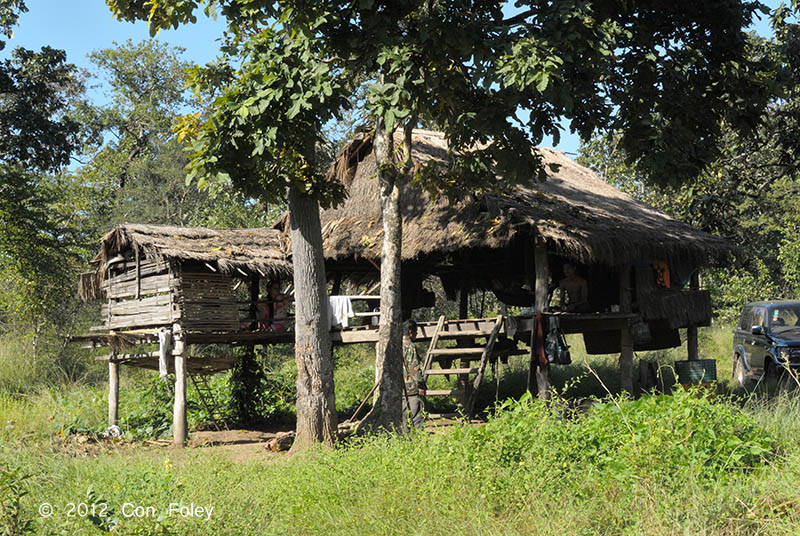
Besides the rare ibis, Cambodia has about 23 species of woodpeckers, and in the Northern plains there are five species you can’t see in peninsular Malaysia. We managed to see four of these five which is quite good.
During our second evening in Tmatboey, the local guide took us to a spot where an Oriental Scops Owl might be seen, and sure enough it flew in with little prompting, in fact a pair! While we were waiting for it to get dark enough for the owls, we could hear Chinese Francolin, but they are quite shy and refused to show themselves.
Below is a photo of a tree being harvested for resin. The locals burn a hole in the tree, which fills with resin, which can be sold adding to their income of growing rice.
On our last morning in Tmatboey, birded the forest around the guesthouses in the early hours, and then on the way back to Siem Reap we stopped a the temple complex at Koh Ker and birded the forested areas around the temple. This would have been one of places off limits during my year 2000 visit, as it was only demined in 2003.
The next day we set off from Siem Reap to the Prek Toal bird sanctuary on the Tonle Sap. Before reaching Prek Toal village we encountered an area where a large number of egrets, cormorants, pelicans and other birds were feeding. The boat was big and spacious and allowed easy birding under the shade. Normally a two hour boat ride to Prek Toal village, we stopped for probably an hour to watch hundreds of large water birds. One of the more interesting birds seen was a Comb Duck.
Prek Toal village is a floating village, although a few of the larger buildings look to be set on piles. Of course the economy of the village is all about fishing. But ecotourism is becoming a more important part. After dropping our luggage at the Prek Toal Core Area Management Center (our guesthouse for the night) we head out another 8 kilometers or so into the heart of the flooded forest.
The Tonle Sap is certainly one of the most amazing ecosystems you can encounter anywhere on the planet. The largest freshwater lake in SE Asia and a UNESCO biosphere site.
The water level changes up to about 9 meters from wet season to dry season. Here at the end of October we are just only a foot or so off the peak water level. The large supply of fresh water and abundant fish were surely major reasons the Khmer civilization at Angkor was so successful.
Interesting species of trees that can flourish although being flooded part of the year are endemic to this area. Vast numbers of birds use this area for breeding including a number of birds that are threatened: Spot-billed Pelican, Milky Stork, Painted Stork, Lesser Adjutant, Greater Adjutant, Black-headed Ibis, Oriental Darter.
In a fascinating and interwoven sequence each species has it’s own breeding season. We happened to arrive just as the pelicans were taking up their places. The darters already had chicks that looked almost ready to fledge, and the Indian Cormorants had just begun building nests on the lower portions of the trees the darters nested in.
We spent two days there, just as the pelicans were arriving, and we could see a large increase in their numbers on the second morning. Due to impoverishment the nesting colonies used to be poached for chicks and eggs. In a very successful project the Wildlife Conservation Society and other NGO’s working with the Cambodian government have converted these same poachers to be rangers and established a series of 25 or more tree houses to watch the nesting sites and intercept any future poachers. There is good empirical data that the bird life has rebounded dramatically. We visited ranger station #24 which was easily accessible by boat, but in just a few weeks hence the water level will have dropped preventing access by boat.
The day we left Prek Toal we had lunch in the floating village. Then we headed back to Siem Reap for some late afternoon birding near a prison on the outskirts of town with a view of Phnom Krom in the distance. We had heard there was a Common Ringed Plover sighted there and perhaps we heard one fly over, but not well seen. At least we got good views of a Red-throated Pipit. That evening we went to dinner in the night market area which has developed as a major tourist scene.
Left to right: Con Foley, Sophoan Sanh (our guide), Danny Lau
The next day we got some morning birding around the Angkor temples, a UNESCO World Heritage Site. The protected status is effective, the secondary forest is well established and birding is good especially the migrants. Here we got many Hainan Blue Flycatchers including the male variant with white throat patch that Danny wanted to see. Next up the temple complex at Ta Prohm and the most photographed tree on the planet growing out of the ruins. Next over to Angkor Thom and the enigmatic faces of Bayon and some of the fascinating stone carvings. Capping the journey, a visit to Angkor Wat.
Unfortunately a restoration project was using a blue-green plastic tarp to cover their work which rather spoilt the photo opportunities. There were some apsaras (celestial dancers) for photo opportunities too!
On our last morning we had a rather dramatic sunrise at a location enroute to the floating village near Tonle Sap, Chong Kneas. Hoping for some rare birds, we got a nice rainbow and a Dusky Warbler. After the morning’s birding and a nice lunch at The Blue Pumpkin we retreated to the Happy Asia Villa hotel for a shower and then the ride to the airport. Amazingly our tuk-tuk to the airport was able to hold all our luggage! Departing for Singapore on SilkAir MI636 at about 6:30 pm and this was a 2 hour direct flight home.
We’d like to thank our guide and Sam Veasna Centre for a great trip. 🙂
Some bird photos from the trip below, more can be seen at
http://www.pbase.com/con_foley/cambodia
Discussion: Our trip at the end of October is not the traditional time of year to bird Cambodia. That would be more likely be during the dry season from January through April, or at least November – December onwards. As we visited just at the end of the rainy season and the beginning of the dry season it was too wet to get access to several places such as Ang Trapeang Thmor (Sarus Crane Reserve), Chhep (Vulture Restaraunt) and Kompong Thom Grasslands (Bengal Florican). If you go during the dry season you can visit more habitats and chances are see more species. On the other hand, we got to see the Tonle Sap at high water which was quite a sight! And were lucky to see both species of rare ibis, which doesn’t always happen. So absolutely no regrets on our timing and as it turns out we had great weather throughout our visit.
Our trip was entirely organized by Sam Veasna Center for Wildlife Conservation, so please contact them at their website for your trip planning!
Lastly here is the list of birds we saw on our trip.
| No | English name | Latin name | Status |
Date First Seen |
| 1 | Lesser Whistling-Duck | Dendrocygna javanica | 31 | |
| 2 | Comb Duck | Sarkidiornis melanotos | 28 | |
| 3 | Indian Spot-billed Duck | Anas poecilorhyncha | 29 | |
| 4 | Red Junglefowl | Gallus gallus | 27 | |
| 5 | Asian Openbill | Anastomus oscitans | 25 | |
| 6 | Lesser Adjutant | Leptoptilos javanicus | Vulnerable | 25 |
| 7 | Indian Cormorant | Phalacrocorax fuscicollis | 28 | |
| 8 | Great Cormorant | Phalacrocorax carbo | 28 | |
| 9 | Little Cormorant | Phalacrocorax niger | 28 | |
| 10 | Oriental Darter | Anhinga melanogaster | Near-threatened | 28 |
| 11 | Spot-billed Pelican | Pelecanus philippensis | Near-threatened | 28 |
| 12 | Yellow Bittern | Ixobrychus sinensis | 31 | |
| 13 | Gray Heron | Ardea cinerea | 28 | |
| 14 | Purple Heron | Ardea purpurea | 28 | |
| 15 | Great Egret | Ardea alba | 28 | |
| 16 | Intermediate Egret | Mesophoyx intermedia | 28 | |
| 17 | Little Egret | Egretta garzetta | 28 | |
| 18 | Cattle Egret | Bubulcus ibis | 25 | |
| 19 | Chinese Pond-Heron | Ardeola bacchus | 25 | |
| 20 | Striated Heron | Butorides striata | 25 | |
| 21 | Black-headed Ibis | Threskiornis melanocephalus | Near-threatened | 29 |
| 22 | White-shouldered Ibis | Pseudibis davisoni | Critically endangered | 25 |
| 23 | Giant Ibis | Pseudibis gigantea | Critically endangered | 26 |
| 24 | Black-shouldered Kite | Elanus caeruleus | 25 | |
| 25 | Brahminy Kite | Haliastur indus | 28 | |
| 26 | Gray-headed Fish-Eagle | Ichthyophaga ichthyaetus | Near-threatened | 28 |
| 27 | Short-toed Eagle | Circaetus gallicus | 27 | |
| 28 | Crested Serpent-Eagle | Spilornis cheela | 26 | |
| 29 | Shikra | Accipiter badius | 27 | |
| 30 | White-rumped Falcon | Polihierax insignis | Near-threatened | 25 |
| 31 | Collared Falconet | Microhierax caerulescens | 25 | |
| 32 | Peregrine Falcon | Falco peregrinus | 28 | |
| 33 | Red-wattled Lapwing | Vanellus indicus | 25 | |
| 34 | Pacific Golden-Plover | Pluvialis fulva | 29 | |
| 35 | Little Ringed Plover | Charadrius dubius | 29 | |
| 36 | Black-winged Stilt | Himantopus himantopus | 29 | |
| 37 | Pheasant-tailed Jacana | Hydrophasianus chirurgus | 28 | |
| 38 | Common Sandpiper | Actitis hypoleucos | 29 | |
| 39 | Wood Sandpiper | Tringa glareola | 29 | |
| 40 | Oriental Pratincole | Glareola maldivarum | 29 | |
| 41 | Whiskered Tern | Chlidonias hybrida | 29 | |
| 42 | Rock Pigeon | Columba livia | Introduced species | 30 |
| 43 | Red Collared-Dove | Streptopelia tranquebarica | 25 | |
| 44 | Spotted Dove | Streptopelia chinensis | 25 | |
| 45 | Zebra Dove | Geopelia striata | 25 | |
| 46 | Thick-billed Pigeon | Treron curvirostra | 25 | |
| 47 | Yellow-footed Pigeon | Treron phoenicopterus | 26 | |
| 48 | Green Imperial-Pigeon | Ducula aenea | 25 | |
| 49 | Alexandrine Parakeet | Psittacula eupatria | 30 | |
| 50 | Blossom-headed Parakeet | Psittacula roseata | 25 | |
| 51 | Red-breasted Parakeet | Psittacula alexandri | 25 | |
| 52 | Banded Bay Cuckoo | Cacomantis sonneratii | 26 | |
| 53 | Plaintive Cuckoo | Cacomantis merulinus | 31 | |
| 54 | Asian Drongo-Cuckoo | Surniculus lugubris | 30 | |
| 55 | Green-billed Malkoha | Phaenicophaeus tristis | 28 | |
| 56 | Greater Coucal | Centropus sinensis | 28 | |
| 57 | Oriental Scops-Owl | Otus sunia | 26 | |
| 58 | Asian Barred Owlet | Glaucidium cuculoides | 30 | |
| 59 | Spotted Owlet | Athene brama | 27 | |
| 60 | Asian Palm-Swift | Cypsiurus balasiensis | 25 | |
| 61 | Crested Treeswift | Hemiprocne coronata | 25 | |
| 62 | Common Kingfisher | Alcedo atthis | 25 | |
| 63 | Stork-billed Kingfisher | Pelargopsis capensis | 30 | |
| 64 | White-throated Kingfisher | Halcyon smyrnensis | 25 | |
| 65 | Black-capped Kingfisher | Halcyon pileata | 28 | |
| 66 | Pied Kingfisher | Ceryle rudis | 29 | |
| 67 | Blue-tailed Bee-eater | Merops philippinus | 28 | |
| 68 | Chestnut-headed Bee-eater | Merops leschenaulti | 27 | |
| 69 | Indian Roller | Coracias benghalensis | 25 | |
| 70 | Eurasian Hoopoe | Upupa epops | 25 | |
| 71 | Oriental Pied-Hornbill | Anthracoceros albirostris | 25 | |
| 72 | Lineated Barbet | Megalaima lineata | 25 | |
| 73 | Coppersmith Barbet | Megalaima haemacephala | 30 | |
| 74 | Gray-capped Woodpecker | Dendrocopos canicapillus | 25 | |
| 75 | Yellow-crowned Woodpecker | Dendrocopos mahrattensis | 25 | |
| 76 | Rufous-bellied Woodpecker | Dendrocopos hyperythrus | 26 | |
| 77 | Rufous Woodpecker | Celeus brachyurus | 28 | |
| 78 | Lesser Yellownape | Picus chlorolophus | 27 | |
| 79 | Black-headed Woodpecker | Picus erythropygius | 26 | |
| 80 | Common Flameback | Dinopium javanense | 26 | |
| 81 | Greater Flameback | Chrysocolaptes lucidus | 26 | |
| 82 | Common Woodshrike | Tephrodornis pondicerianus | 25 | |
| 83 | Large Cuckoo-shrike | Coracina macei | 25 | |
| 84 | Indochinese Cuckoo-shrike | Coracina polioptera | 26 | |
| 85 | Black-winged Cuckoo-shrike | Coracina melaschistos | 25 | |
| 86 | Swinhoe’s Minivet | Pericrocotus cantonensis | 30 | |
| 87 | Ashy Minivet | Pericrocotus divaricatus | 31 | |
| 88 | Small Minivet | Pericrocotus cinnamomeus | 26 | |
| 89 | Scarlet Minivet | Pericrocotus flammeus | 25 | |
| 90 | Brown Shrike | Lanius cristatus | 31 | |
| 91 | Burmese Shrike | Lanius collurioides | 25 | |
| 92 | Black-naped Oriole | Oriolus chinensis | 25 | |
| 93 | Black-hooded Oriole | Oriolus xanthornus | 25 | |
| 94 | Black Drongo | Dicrurus macrocercus | 25 | |
| 95 | Ashy Drongo | Dicrurus leucophaeus | 26 | |
| 96 | White-browed Fantail | Rhipidura aureola | 26 | |
| 97 | Pied Fantail | Rhipidura javanica | 28 | |
| 98 | Black-naped Monarch | Hypothymis azurea | 25 | |
| 99 | Blue Magpie | Urocissa erythrorhyncha | 26 | |
| 100 | Rufous Treepie | Dendrocitta vagabunda | 25 | |
| 101 | Racket-tailed Treepie | Crypsirina temia | 28 | |
| 102 | Large-billed Crow | Corvus macrorhynchos | 26 | |
| 103 | Indochinese Bushlark | Mirafra erythrocephala | 25 | |
| 104 | Barn Swallow | Hirundo rustica | 29 | |
| 105 | Pacific Swallow | Hirundo tahitica | 29 | |
| 106 | Chestnut-bellied Nuthatch | Sitta castanea | 26 | |
| 107 | Velvet-fronted Nuthatch | Sitta frontalis | 26 | |
| 108 | Sooty-headed Bulbul | Pycnonotus aurigaster | 25 | |
| 109 | Stripe-throated Bulbul | Pycnonotus finlaysoni | 30 | |
| 110 | Yellow-vented Bulbul | Pycnonotus goiavier | 28 | |
| 111 | Streak-eared Bulbul | Pycnonotus blanfordi | 27 | |
| 112 | Yellow-browed Warbler | Phylloscopus inornatus | 30 | |
| 113 | Pale-legged Leaf-Warbler | Phylloscopus tenellipes | 30 | |
| 114 | Oriental Reed-Warbler | Acrocephalus orientalis | 31 | |
| 115 | Dark-necked Tailorbird | Orthotomus atrogularis | 28 | |
| 116 | Brown Prinia | Prinia polychroa | 25 | |
| 117 | Rufescent Prinia | Prinia rufescens | 26 | |
| 118 | Plain Prinia | Prinia inornata | 31 | |
| 119 | White-crested Laughingthrush | Garrulax leucolophus | 26 | |
| 120 | Pin-striped Tit-Babbler | Macronous gularis | 27 | |
| 121 | Asian Brown Flycatcher | Muscicapa dauurica | 26 | |
| 122 | Oriental Magpie-Robin | Copsychus saularis | 28 | |
| 123 | Hainan Blue-Flycatcher | Cyornis hainanus | 30 | |
| 124 | Taiga Flycatcher | Ficedula albicilla | 25 | |
| 125 | Mugimaki Flycatcher | Ficedula mugimaki | 30 | |
| 126 | Blue Rock-Thrush | Monticola solitarius | 28 | |
| 127 | Stonechat | Saxicola torquatus | 25 | |
| 128 | Pied Bushchat | Saxicola caprata | 25 | |
| 129 | Common Hill Myna | Gracula religiosa | 25 | |
| 130 | Common Myna | Acridotheres tristis | 25 | |
| 131 | Vinous-breasted Starling | Acridotheres burmannicus | 25 | |
| 132 | Black-collared Starling | Gracupica nigricollis | 26 | |
| 133 | Blue-winged Leafbird | Chloropsis cochinchinensis | 25 | |
| 134 | Golden-fronted Leafbird | Chloropsis aurifrons | 25 | |
| 135 | Scarlet-backed Flowerpecker | Dicaeum cruentatum | 27 | |
| 136 | Ruby-cheeked Sunbird | Chalcoparia singalensis | 25 | |
| 137 | Plain-throated Sunbird | Anthreptes malacensis | 25 | |
| 138 | Purple Sunbird | Cinnyris asiaticus | 25 | |
| 139 | Olive-backed Sunbird | Cinnyris jugularis | 25 | |
| 140 | Western Yellow Wagtail | Motacilla flava | 31 | |
| 141 | Red-throated Pipit | Anthus cervinus | 29 | |
| 142 | House Sparrow | Passer domesticus | 29 | |
| 143 | Plain-backed Sparrow | Passer flaveolus | 31 | |
| 144 | Eurasian Tree Sparrow | Passer montanus | 27 | |
| 145 | Two-barred greenish warbler | Phylloscopus plumbeitarsus | 27 | |
| 146 | Dusky Warbler | Phylloscopus fuscatus | 31 |

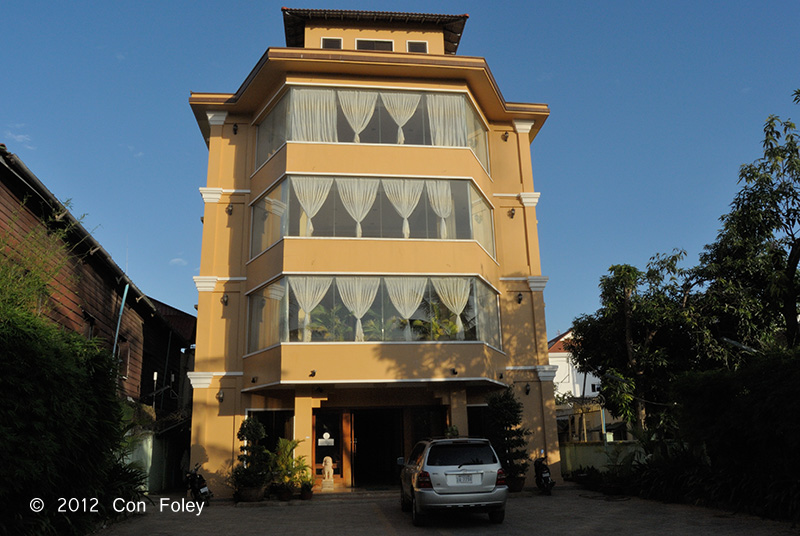
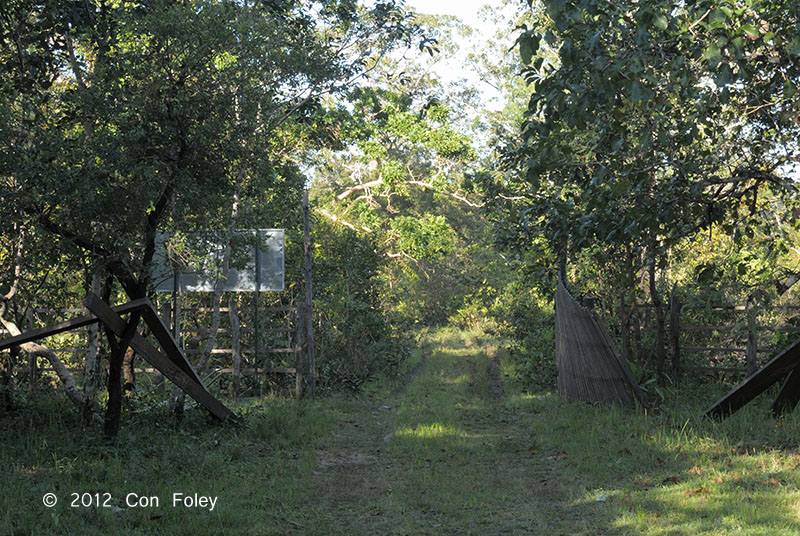
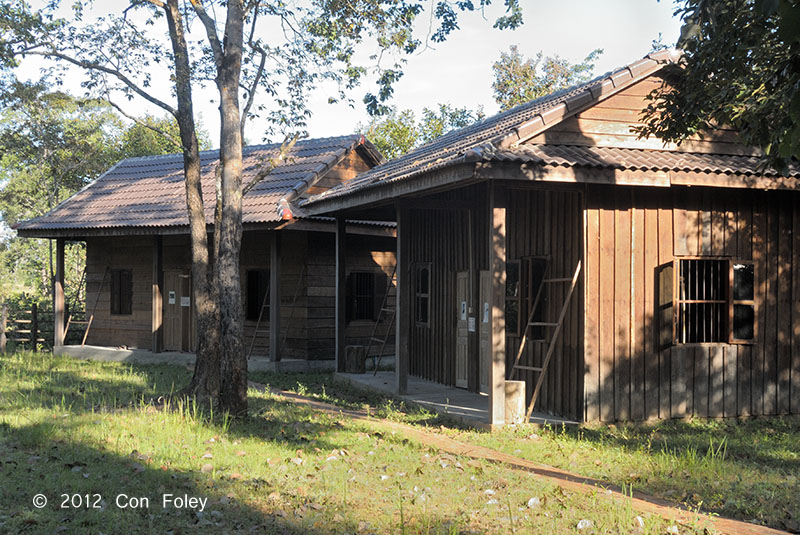
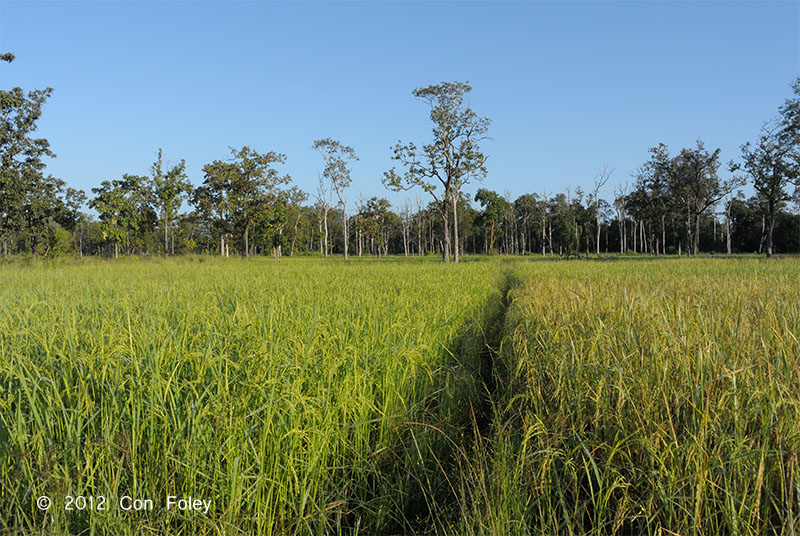
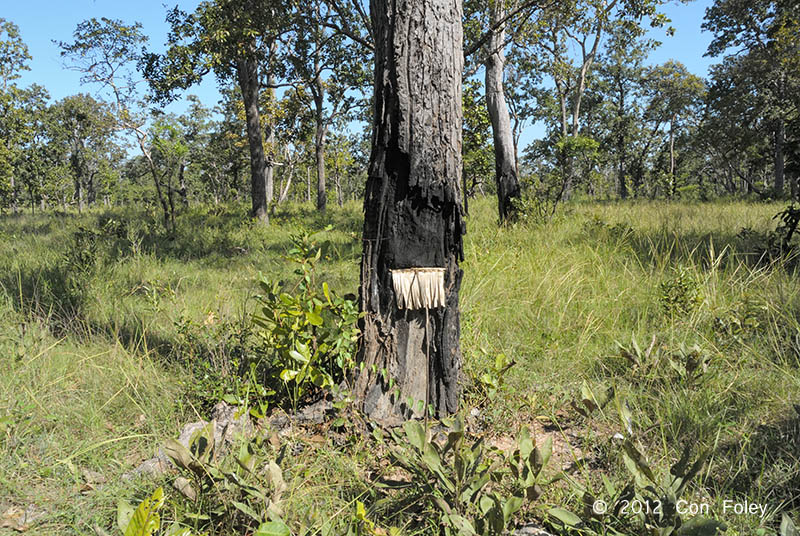
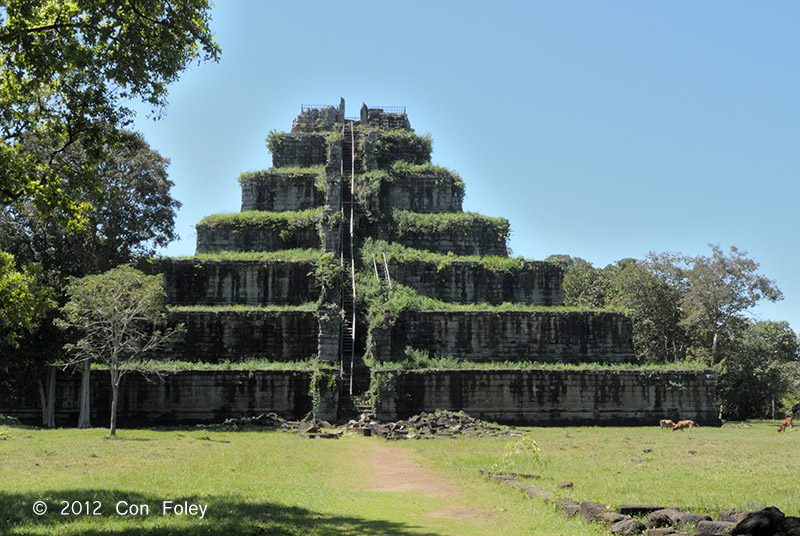
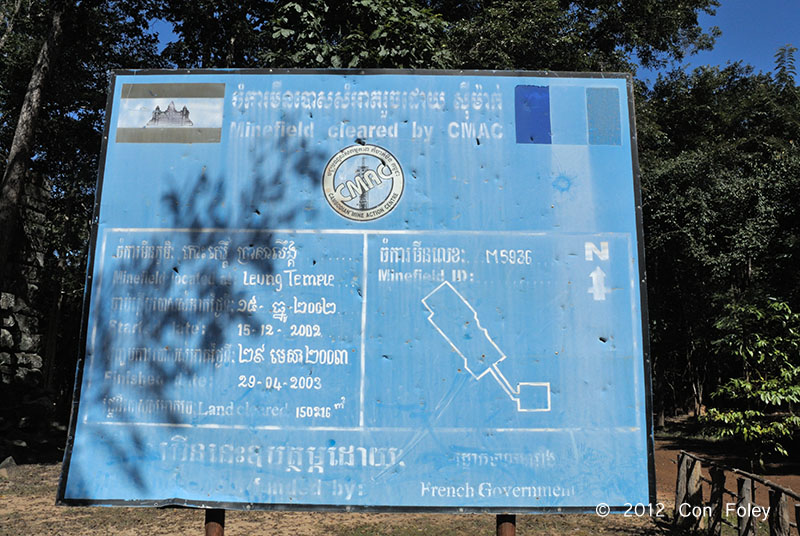
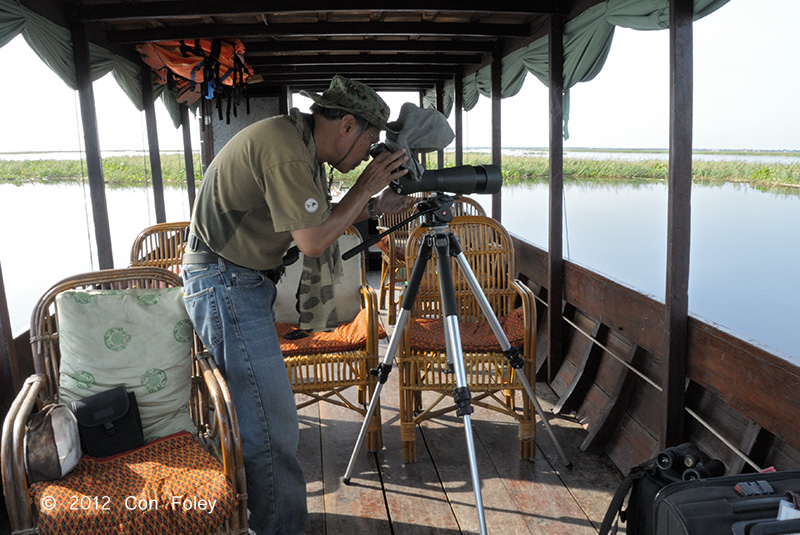
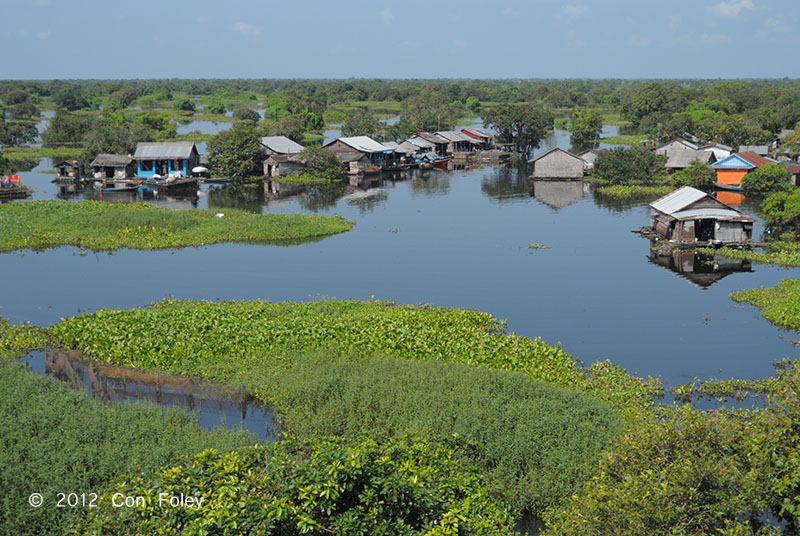
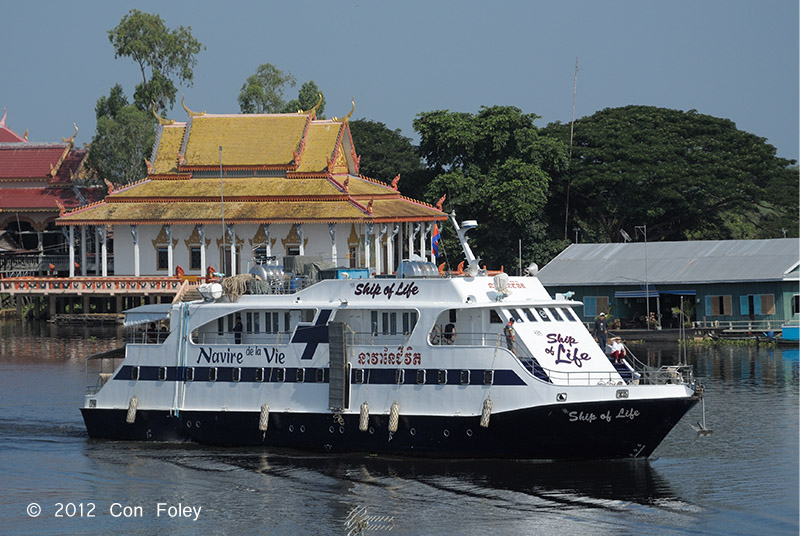
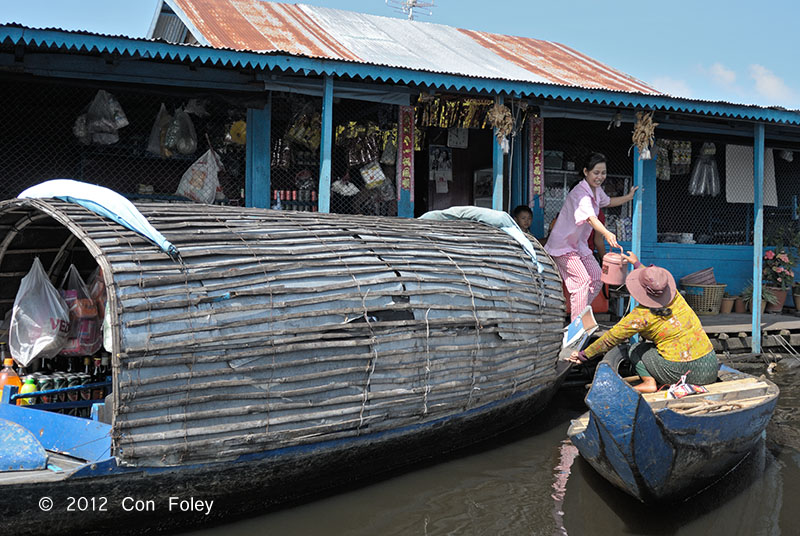
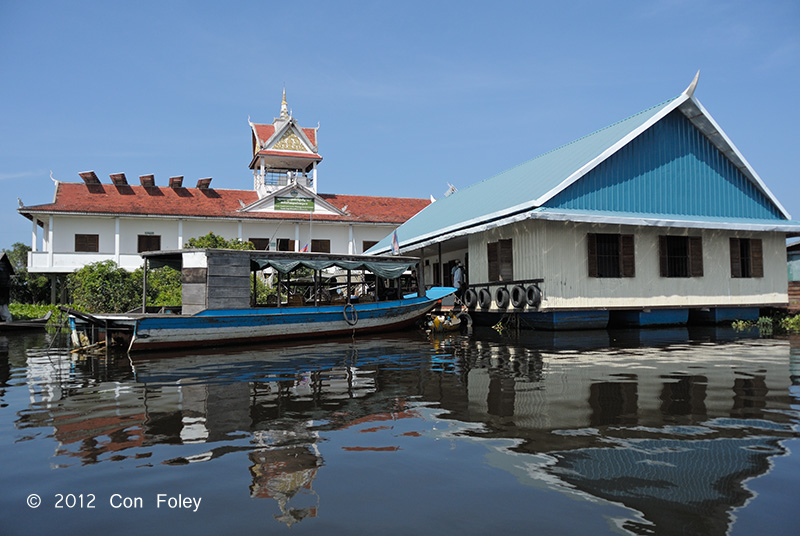
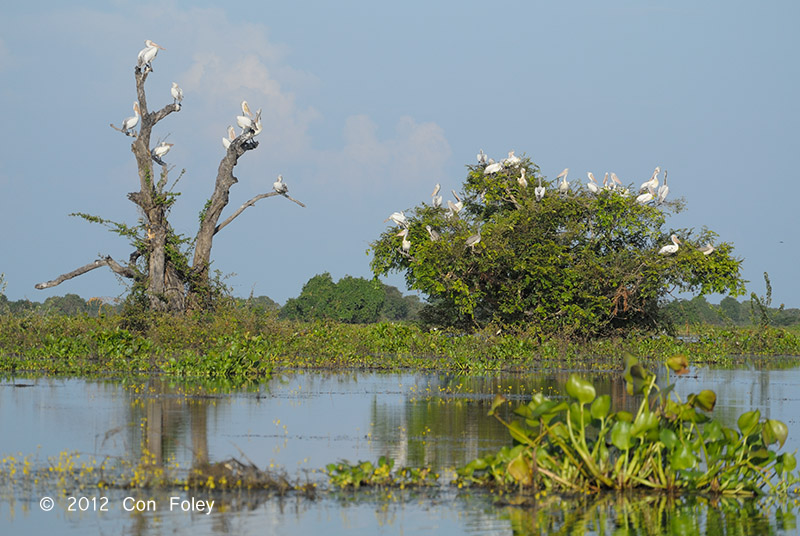
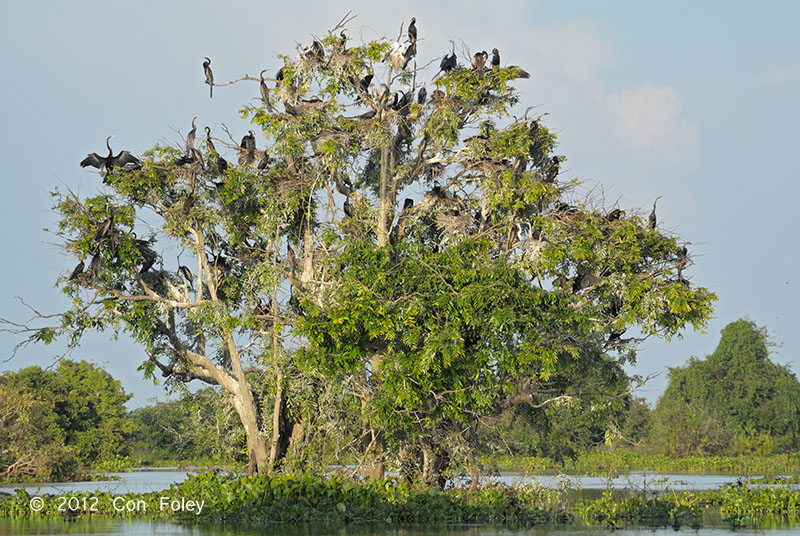
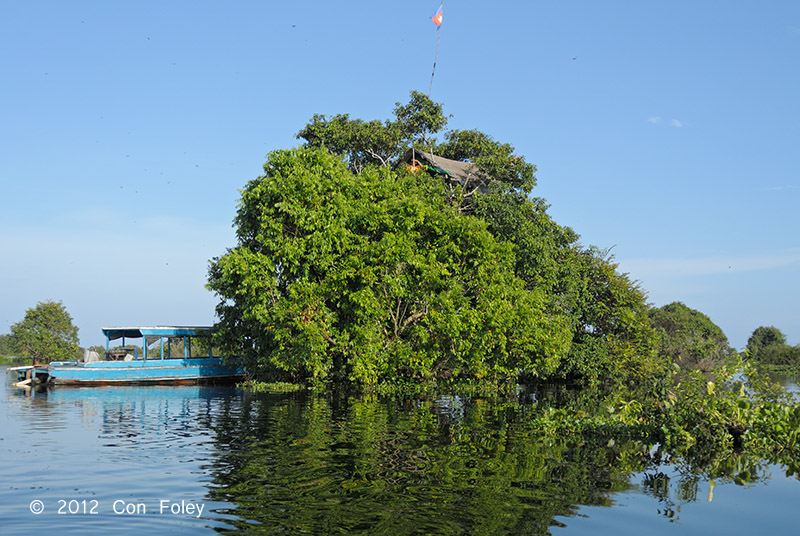
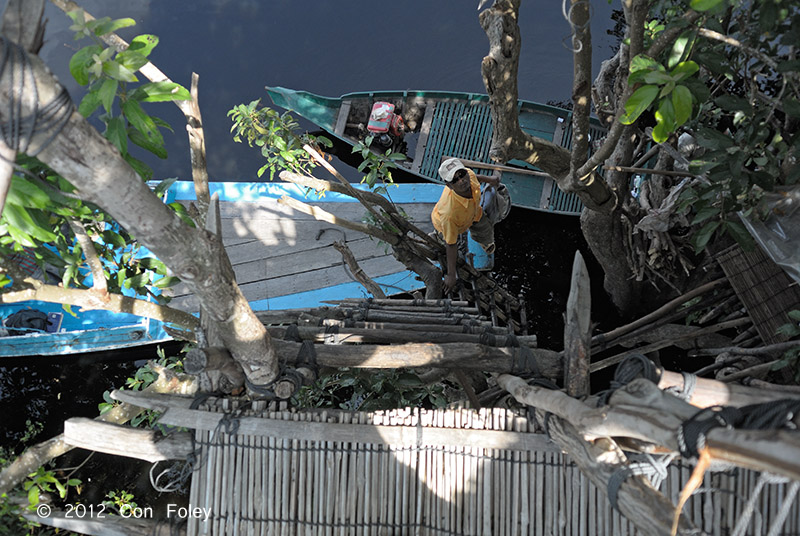
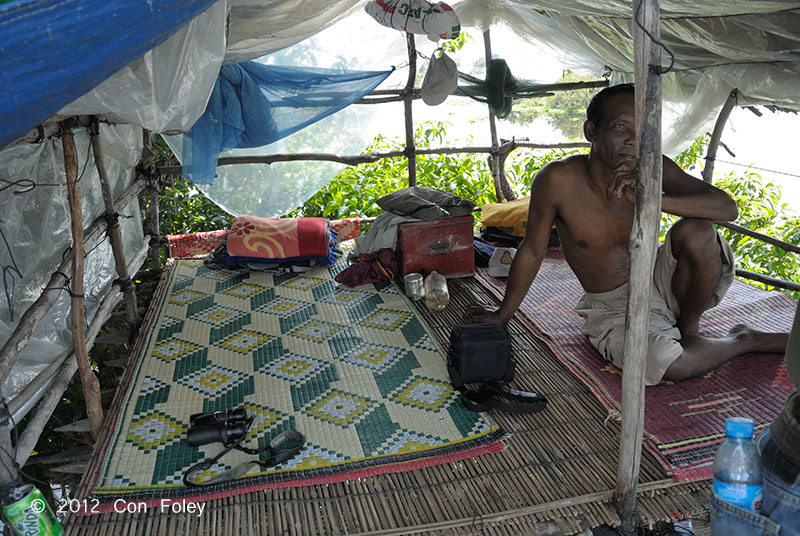
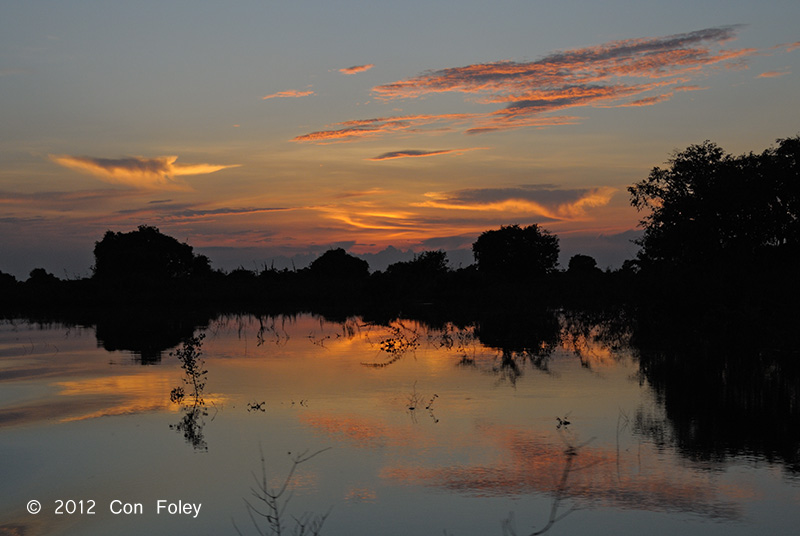
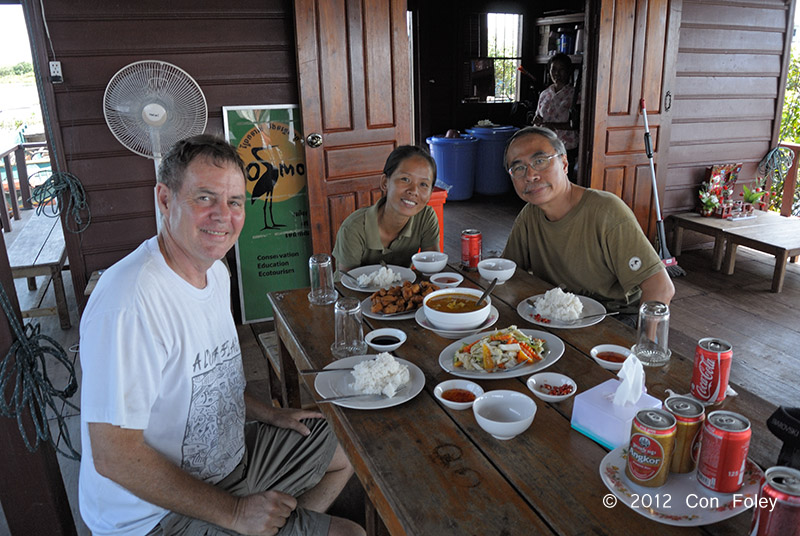
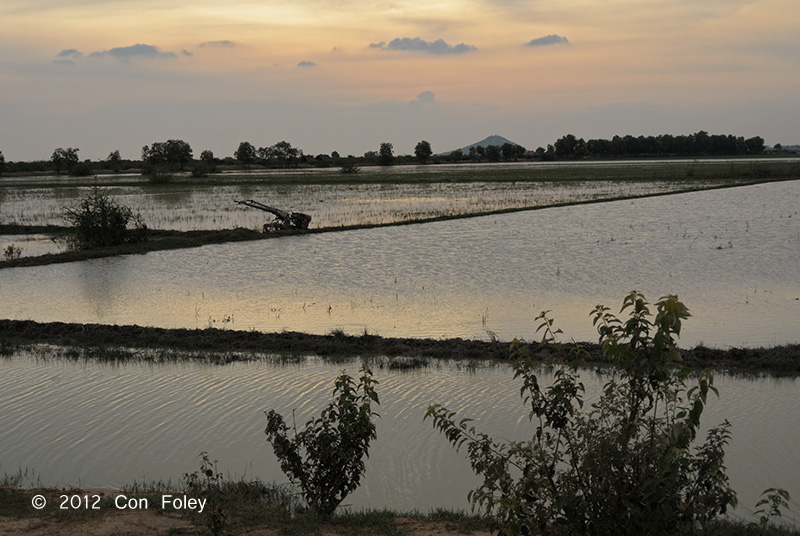
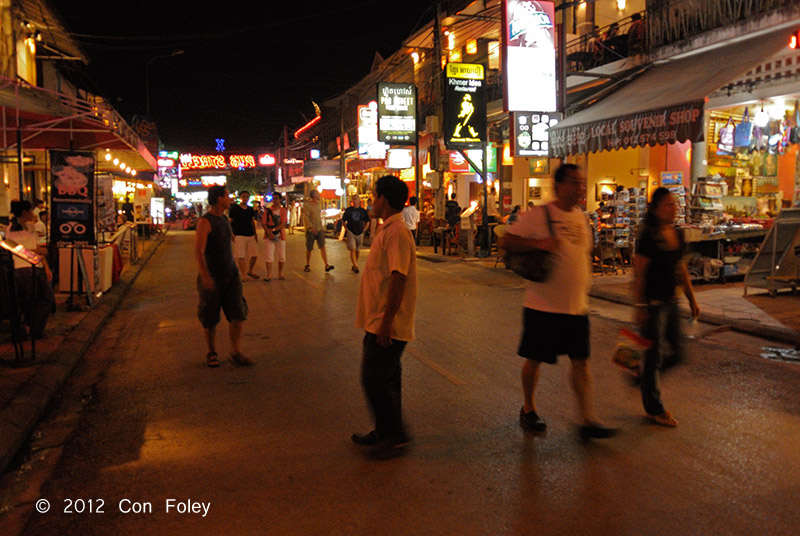
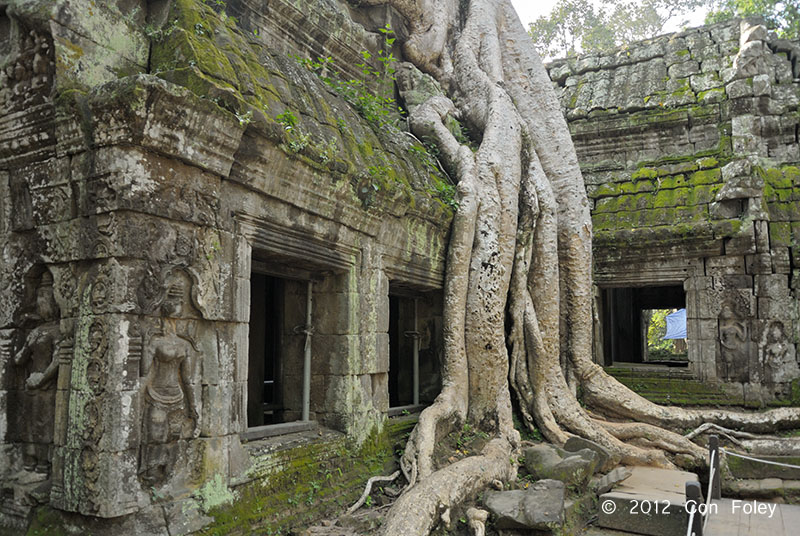
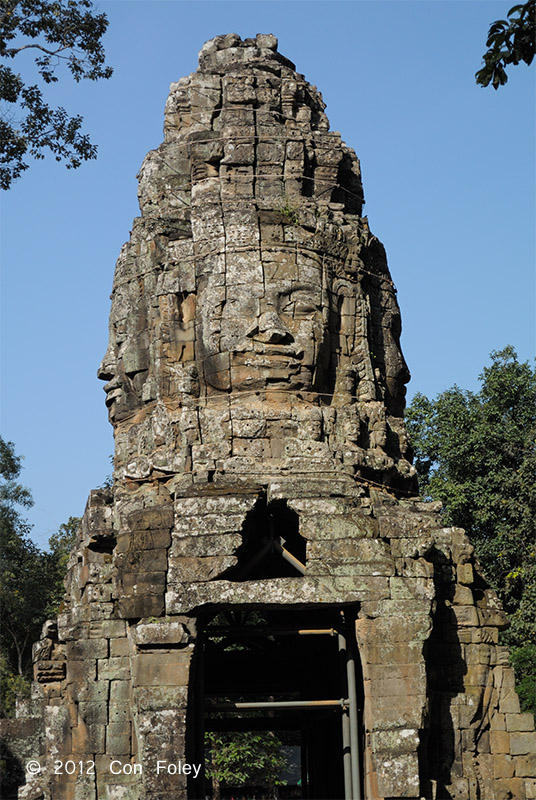
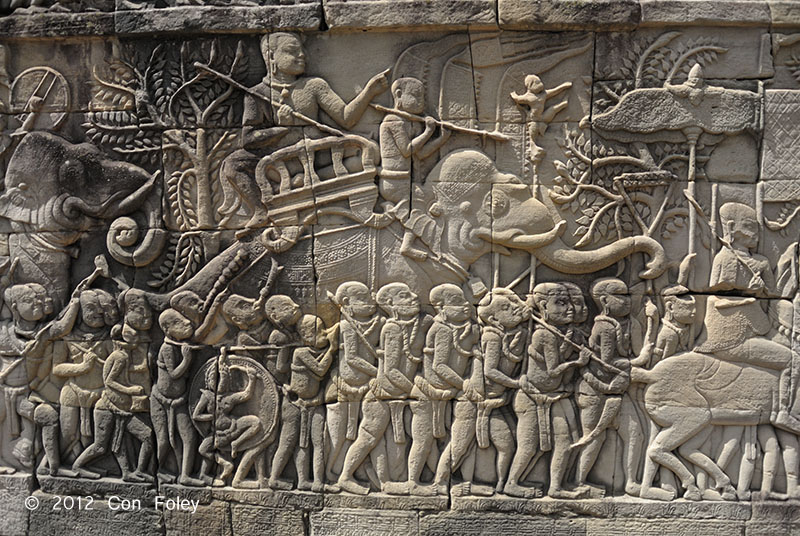
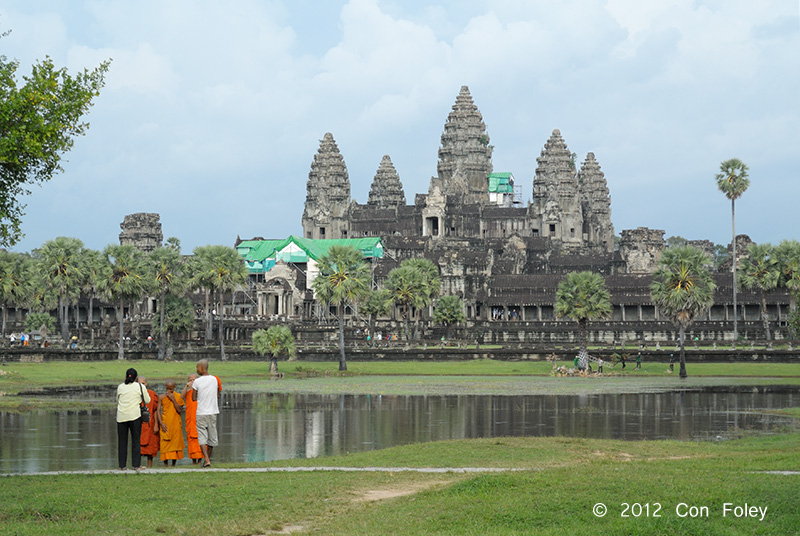
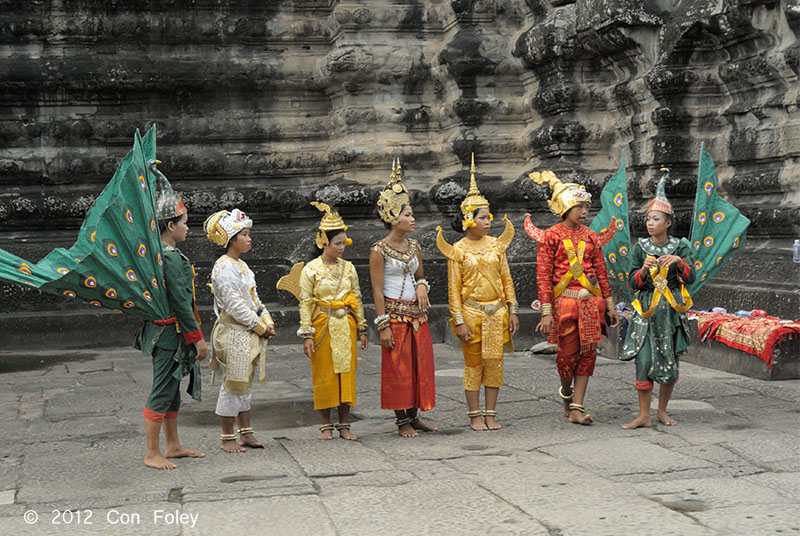
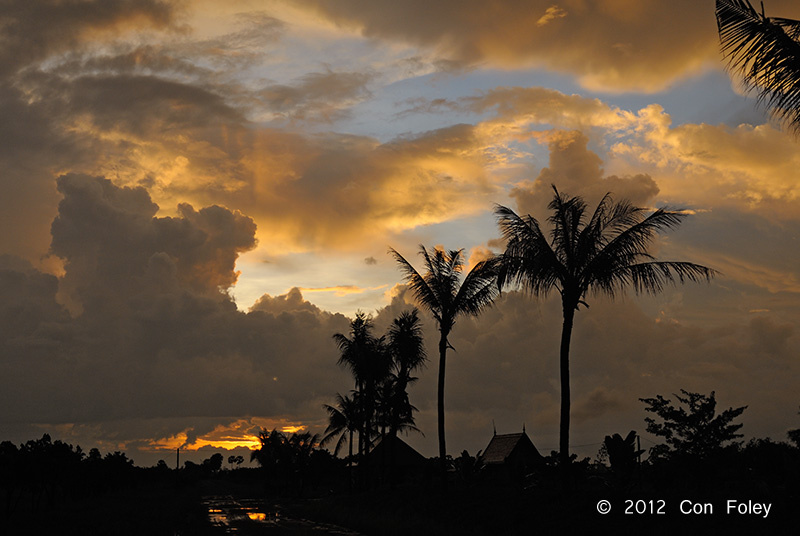
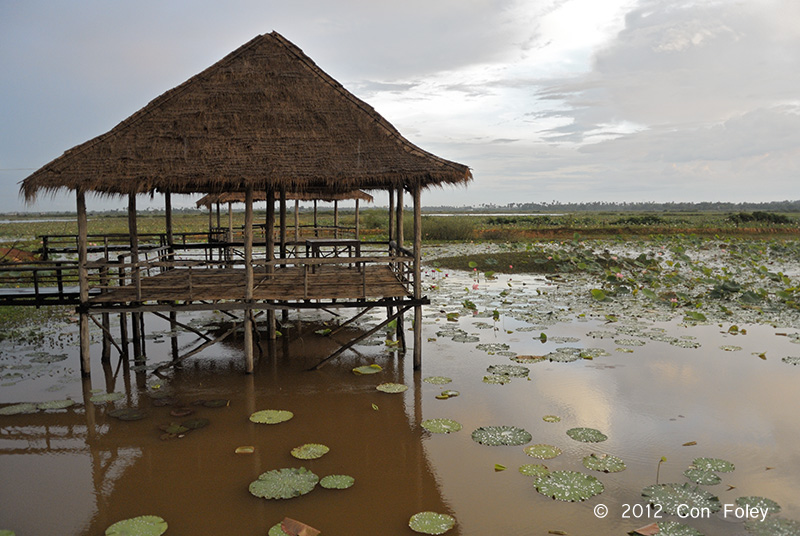
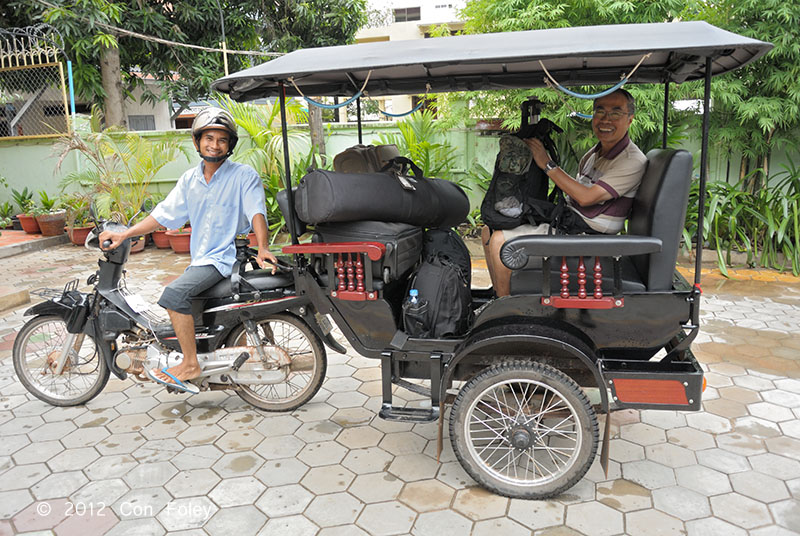


















It’s a great report! Thanks for your visit to Cambodia and I hope you’ll keep sharing the information of Cambodia to your friends about Cambodia.